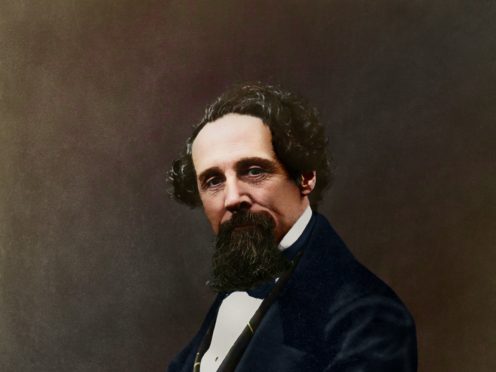Experts have colourised black-and-white photographs of Charles Dickens – with some surprising results.
The Charles Dickens Museum researched the famous novelist’s fashion choices, as well as the skin tone and the complexion of his living descendants.
The first of eight black-and-white images to have been colourised, shows a 47-year-old Dickens with tanned skin and an “ostentatious” waistcoat, textured navy jacket and a bow tie.

Researchers analysed the complexion and skin tone of two of his great-great grandsons, Gerald Dickens and Mark Dickens.
Photographer Oliver Clyde also worked with experts on the fashion of the time.
“My biggest surprise, and I think everyone else’s biggest surprise, will be skin colour,” he said.
“Dickens bucks the image of the pallid Victorian complexion by being tanned and healthy looking.
“We know he loved travelling and being outside in the sun and that is reflected in the images.

“Seeing Dickens in colour reveals so much – You can see photographs where he clearly hasn’t run a comb through his hair for days, where his beard is all over the place or where he’s sweating after being made to stand in a hot room for hours on end.”
He said of the portrait: “You get to see him as more of a person instead of this almost fictional character.”
Museum curator Frankie Kubicki told the PA news agency: “We knew that Dickens loved bright colours, that he had a real passion for waistcoats and all these sort of amazing gaudy things.”
But the photography of the time made Dickens look “very austere… and that’s not at all what Dickens was like….
“Seeing this image in colour – he’s got that amazing little smile – It really gives a hint of what he was like.
“There’s a real sparkle of vitality, which is lost in the black and white, and a glint in his eyes and a kind of very playful nature, which is really heightened by the colour.”
Find out what the @DickensMuseum means to acclaimed actor, writer, director, museum patron, friend and keen Dickensian @SimonCallow | https://t.co/ckTTJYMVxv
Donate via the appeal on our website #SupportAppeal #IndependentMuseums #Dickens #DickensMuseum
— Dickens Museum (@DickensMuseum) May 28, 2020
She added: “I am confident that it is a really accurate portrayal but of course it is a portrayal…. But we’ve done a lot of research to make it as true as we can.”
The colour photographs are backed up by descriptions of Dickens and his clothes, which “paint a picture of a Savile Row shopper with a keen sense of style, a fondness for a natty waistcoat and a daring eye for a lively ensemble,” she said.
A review article in The Dickensian said his dress sense “struck all observers like a streak of lightning”.
And a colleague on The Morning Chronicle wrote that Dickens had an “exuberant display of jewellery on his vest and on his fingers”.
The portraits will feature in Technicolour Dickens: The Living Image Of Charles Dickens, an exhibition on how the author defined, changed and controlled his public image.
It will open at the Charles Dickens Museum – the London residence where Dickens wrote Oliver Twist and Nicholas Nickleby – when the easing of restrictions make it possible.
The museum says that nearly all of its income streams have been cut off with closure and that it needs £30,000-a-month to cover the basic costs of caring for Dickens’ house and the collection that it holds.
The first image has been released ahead of the 150th anniversary of the author’s death, on June 9.
It can be seen at www.dickensmuseum.com and donations can be made at www.justgiving.com/campaign/DickensMuseumAppeal.
